The withdrawal of 1971 was a watershed moment in the history of the British military presence in the Indo-Pacific.
However, the withdrawal from ‘East of Suez’ did not end the British presence in the region, for Britain retained some military facilities and defence arrangements.
The British Defence Singapore Support Unit is one of them.
This article is the opinion of the author and not necessarily that of the UK Defence Journal. If you would like to submit your own article on this topic or any other, please see our submission guidelines.
In July 1967 and January 1968, the British Government under the leadership of Harold Wilson announced through supplementary policy documents to the 1966 Defence White Paper that Britain would withdraw in 1971 from its major military installations in the region ‘east of Aden’.
Some of the factors influencing the British commitment to withdraw its forces were the escalating economic pressures and the perception in London that Britain was increasingly becoming a European power.
Harold Wilson and his Cabinet supported the decision following the argument that Britain’s military power and international influence depended more on the robustness of its economy than on Britain’s extensive military bases throughout the region East of Suez.
Therefore, the 1968 decision paved the way for the end of the British bases in the Persian Gulf, Oman, Seychelles, the Maldives, Singapore, and Malaysia.
Nevertheless, in some cases, although significantly reduced, the British military presence would persist beyond the 1971 redline or would reorganise to operate without a “permanent British base”. Edward Heath’s government commitment to maintaining defence links with Singapore and Malaysia – through the signing of the Five Power Defence Arrangements in 1971 – indicated that the withdrawal would not be absolute. Beyond that, Brunei would remain a British Protectorate until its independence in 1984, later becoming a base for Gurkha Battalions of the British Army, while Hong Kong would stay under British administration until its handover to China in 1997. In addition, Britain retained the British Indian Ocean Territory, which has been hosting significant military installations mainly used by the United States since the early 1970s.
Some military infrastructure in Oman, Seychelles, and the Maldives remained British bases until the mid-late 1970s. The Royal Air Force (RAF) retained most of these remaining bases, including the RAF Gan in the Maldives until 1976 and RAF Masirah and Salalah in Oman until 1977. The independence of Seychelles in 1976 ended the British detachment present in the former Crown Colony. By the end of that decade, Britain had retained an East of Suez military presence in Singapore, Brunei, Hong Kong, a naval presence in the Persian Gulf through Armilla Patrol (later known as Operation Kipion), and a Naval Party in the British Indian Ocean Territory.
Within the context of the strategic retreat of the 1970s, Britain’s presence in Singapore appears as one of the few exceptions that would secure a British military facility in the Far East in the coming decades. In 1963, Singapore, alongside the Federation of Malaya, North Borneo and Sarawak, merged and formed the nation-state of Malaysia. The marge ended 144 years of British rule in Singapore, only interrupted by the Japanese occupation between 1942 and 1945. However, mutual distrust, ethnic convolution, and economic and political instability marked Singapore’s union with the rest of Malaysia, leading to its expulsion from the union in 1965. Thus, Singapore became an independent nation after just 23 months as part of Malaysia.
After the independence efforts of Singapore progressed, the extensive British military installations in the country went through considerable changes. Following Singapore independence in 1965, the British Government initiated the gradual reduction in the size of “Her Majesty’s Naval Base, Singapore” or “Sembawang Naval Base”. Although no longer the centre of a grand imperial strategy, which elevated the naval base as one of the largest in the world during the 1930s, the local infrastructure remained relevant. Despite that, the subsequent British Government announcements of 1967 and 1968, concerning the withdrawal from East of Aden, accelerated the British naval disengagement. In December 1968, Britain handed over the naval base to the Government of Singapore. The last Royal Navy vessel, HMS Mermaid, left the Naval Base in late 1975, while the last soldier of the British Army left in early 1976.
Singaporean authorities expressed their concern about the British departure and tried to delay the decision with negotiations in London. However, the conversations in London only achieved minor results, including the extension of the withdrawal deadline from March to December 1971. It is worth noting that in the late 1960s, the British military presence contributed to roughly 20% of Singapore’s Gross Domestic Product (GDP), and the local defence force was non-existent. Therefore, the British departure was not a short-term objective of the Singaporean Government, which had initiated the training of its armed forces only in mid-1967.
Singapore’s concerns about the future of regional security after the end of the British military presence contributed to the adaptation of a relevant defence agreement. Since 1957, the UK and the Federation of Malaya had maintained a bilateral defence agreement, which also involved Australia and New Zealand. The Anglo-Malayan Defence Agreement indicated that Britain would provide direct military support to Malaya in case of foreign military aggression or domestic insurgency. During its existence, New Zealand and Australia used the Agreement to justify their involvement in the Malayan Emergency and the Indonesian-Malaysian Confrontation, both of which directly involved Britain. In 1963, after Malaya merged with Singapore, North Borneo and Sarawak, the Agreement was renamed as “Anglo-Malaysian Defence Agreement”, keeping the same commitment of its 1957 form. Following the British decision to reduce most of its presence in the region, Britain and its regional allies would reformulate the Anglo-Malaysian Defence Agreement.
In early April 1971, negotiations about the future of Britain’s defence commitment to Malaysia and Singapore resulted in the Five Power Defence Arrangements (FPDA). In November of that same year, Britain, Australia and New Zealand formed the ANZUK, a joint military force to defend the Asian Pacific region. The ANZUK headquarters were based in Singapore, but units were also present in Malaysia. Despite the significant military integration offered by the ANZUK, including a brigade (the 28th ANZUK Brigade) of British, New Zealander and Australian units, the tripartite arrangement was disbanded in 1974, leaving the FPDA as the sole defence commitment involving Britain, Australia and New Zealand.
The Five Power Defence Arrangements is central to understanding the British military presence in Singapore after the withdrawal of 1971. Through the FPDA, its five members have the framework for continued defence cooperation and integration. Examples of collaboration are the annual exercises, first held by the FPDA in 1972, and the Integrated Air Defence System (IADS) for Singapore and Peninsular Malaysia based at Royal Malaysian Air Force (RMAF) Butterworth. Within this context, the cornerstone of the Arrangements is the commitment of the five powers to consult each other “immediately” in case of a threat of armed attack on any of its members to determine what measures should be taken in response. Additionally, due to the disputes in the South China Sea, the FPDA is open to requests from its members to aid in enforcing their exclusive economic zones (EEZ) in the area. Since its creation, the geographical area of its military exercises included parts of the South China Sea but since the 2010s this practice has been reinforced.
Even though there is no specific commitment to intervene militarily, the FPDA proved to be a resilient organisation, outlasting the Southeast Asia Treaty Organization (SEATO) and the Central Treaty Organisation (CENTO) or Baghdad Pact; British and American defence initiatives in Asia dating from the 1950s. Alongside the joint annual exercises, there is the yearly FPDA Defence Chiefs’ Conference and the FPDA Ministerial Meeting hosted by Singapore or Malaysia. The 50th anniversary of the Five Power Defence Arrangements celebrated in 2021 symbolises that this defence framework is a reliable and resilient base for Britain’s increasing interests in the Indo-Pacific.
In addition, the FPDA is one of the main factors for the continuity of a British presence in Singapore, more precisely, a small detachment at Sembawang.
Maintained by the Naval Party 1022 (NP1022), the British Defence Singapore Support Unit (BDSSU) is Britain’s last permanent naval facility in Singapore. According to the Royal Navy, the British Defence Singapore Support Unit is “one of the smallest military units in the Forces”, comprising “just 33 men and women (UK service and civilian personnel, plus locally-employed civilians)”.
The BDSSU can trace its history back to the HMNB Singapore, built by the British Government during the interwar years and completed in 1938. Following the decrease in the regional British military during the 1970s, the role of the naval facility for the Royal Navy transitioned from its vast installations, capable of basing several ships while providing technical maintenance, to a small – but valuable – refuelling and supply base. For more than fifty years, the British personnel based at Sembawang have supported British and FPDA vessels operating in the region.
The British base also benefits from its location “within” the Sembawang naval shipyard, enabling the new Queen Elizabeth-class carriers to use the Singaporean infrastructure when needed. It is worth noting that the relevance of the Support Unit and the attention given to it has been increasing since the early 2010s. In 2013, displaying the role of the BDSSU, HMS Illustrious visited the facility to refuel and embark on humanitarian aid supplies before heading to the Philippines. Although occurring during the years that the Royal Navy was facing significant cuts due to the British Government’s decisions presented through the Strategic Defence and Security Review 2010, the visit of HMS Illustrious is one of the early indications that Britain would seek a military “re-engagement” with the region.
The British “tilt” to Singapore gained pace in 2018 when the BDSSU refuelled two frigates (HMS Sutherland and HMS Argyll) and one amphibious transport dock (HMS Albion, then the Fleet Flagship) followed by another frigate in February 2019 (HMS Montrose).
In 2020, after “routine maintenance” in Singapore, survey ship HMS Enterprise departed to the Java Sea. A deployment to the South China Sea preceded HMS Enterprise’s time alongside for maintenance at Sembawang. Similarly, some of the British vessels using the Support Unit were en route to or coming from deployments in the contested waters of the South China Sea. It is worth noting that the increasing numbers of vessels contributed to the revitalisation of the British Defence Support Unit as a small force capable of repairs and logistics support to the Royal Navy and FPDA’s navies.
While the British naval presence in the region increased slowly but steadily, in December 2019, the then Defence Secretary, Gavin Williamson, declared that Britain was considering new military bases overseas, one of them in Singapore or Brunei. Although the further details were not disclosed and plans for “new bases” in the region have not resurfaced since 2019, the British Government continued its plans to increase its presence East of Suez.
The Government’s 2021 Integrated Review and its subsequent command paper titled “Defence in a Competitive Age” stated that one Batch 2 River-class patrol vessel would be permanently based in the Indo-Pacific region. Amendments to this plan committed another patrol vessel to the Indo-Pacific. Thus, the Ministry of Defence and the Royal Navy initiated the preparations for the deployment of HMS Tamar (the namesake of the British naval base in Hong Kong, closed in 1997) and HMS Spey to the Indo-Pacific. Even though the initial plans include no specific base of operations for Spey and Tamar, the two ships are set to benefit from the British Defence Singapore Support Unit. In July 2021, a spokesperson at the British Embassy in Tokyo declared that the patrol vessels would not have a permanent naval base. Both ships are expected to meet larger British naval deployments in the region, including carrier strike groups.
In July 2021, the UK Carrier Strike Group 21 (CSG21) deployed on Operation Fortis between May and December 2021 passed through the Singapore Strait. Sailing past instead of stopping over, some ships of the Carrier Strike Group 21 performed exercises with the Republic of Singapore Navy before sailing to the South China Sea. Three days before the exercises, on 23 July, the Royal Fleet Auxiliary (RFA) Tidespring broke away from the main group. According to the British Government, RFA Tidespring performed “a quick and contactless replenishment pit-stop in Singapore. She will now sustain the group as it proceeds further east”. The refuelling and stop planned to occur in Singapore faced challenges due to the Covid-19 Pandemic; therefore, Tidespring “contactless replenishment” occurred with aid from the Republic of Singapore Navy. In the end of July 2021, amidst Chinese warnings, the UK Carrier Strike Group 21 entered the South China Sea enroute to Japan.
Concerning the size of the installations in Singapore, HMS Queen Elizabeth would need to use the extensive facilities at the Changi Naval Base, built to accommodate the large aircraft carriers of the US Navy. The British-operated installations at Sembawang can accommodate the Type 23 frigates and Type 45 destroyers. However, the British facilities and Support Unit are not designed or expected to accommodate several frigates and destroyers. Thus, part of the British vessels deploying alongside HMS Queen Elizabeth would need to rely on facilities provided by Singapore or Malaysia through the FPDA framework.
According to the British Government, at least one ship from the Carrier Strike Group is going to take part in Exercise Bersama Gold, which marks the 50th anniversary of the Five Power Defence Arrangements. During these annual exercises, the BDSSU generally support one Royal Navy surface vessel and another RFA ship. Despite that, it is worth mentioning that the British naval presence in these annual exercises is not a commitment, and there were exercises with no British vessel.
Therefore, the British military presence in Singapore remains relevant despite its small size. Moreover, the BDSSU is directly linked with the FPDA, the leading multilateral defence framework that Britain possesses in the Indo-Pacific. Alongside the continued and permanent British presence in Brunei, the detachment in Singapore indicates that the 1971 withdrawal was incomplete, leaving behind the bases for future re-engagement.
Officially established as a policy through the 2021 Integrated Review, the British “tilt” to the Indo-Pacific benefits considerably from the current military presence in Singapore. However, if Britain aims to become the foremost European power in the region, the British Defence Singapore Support Unit might require more investment. A modest increase in accommodation and store capacity alongside expanding personnel numbers based in Singapore would assure that an increased British military presence in the Indo-Pacific has adequate support without relying extensively on allies when operating near the Malay Peninsula and the South China Sea. Thus, the strategic position of “Global Britain” in the area would be strengthened through minor investments. Nevertheless, the close British defence links with Australia, New Zealand, Singapore, and Malaysia through the Five Powers Defence Arrangements, and Japan, insure Britain that its renewed presence in the Indo-Pacific has partners willing to support British military deployments in the region.
References and Further Reading
Chew, M. (1998). Of hearts and minds: The story of Sembawang Shipyard. Singapore: Sembawang Shipyard.
Hack, K. (2001). Defence and decolonisation in Southeast Asia: Britain, Malaya and Singapore 1941–1968. Richmond: Curzon Press.
James, William D. (2021) Global Britain’s strategic problem East of Suez. European Journal of International Security 6:2, pages 171-189.
Murfett, M. H., et al. (2011). Between two oceans: A military history of Singapore from 1275 to 1971. Singapore: Marshall Cavendish Editions.
Thompson, S. (2015). British military withdrawal and the rise of regional cooperation in South-east Asia, 1964–73. New York: Palgrave Macmillan.
Turnbull, C. M. (2009). A history of modern Singapore, 1819–2005. Singapore: NUS Press.


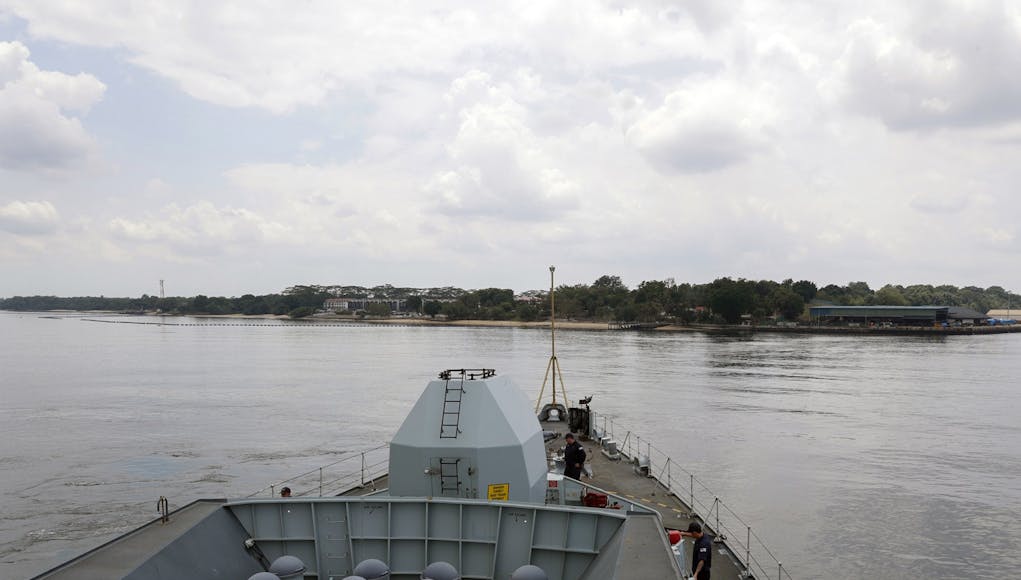

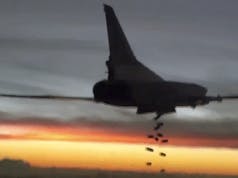
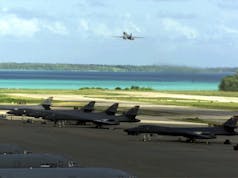
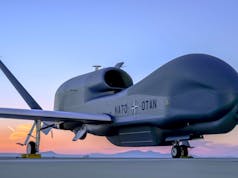
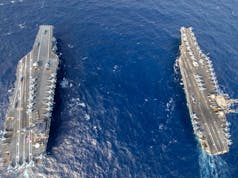




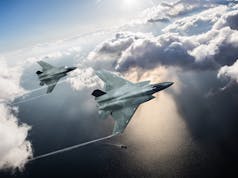

Mornin’ All, very interesting article. Kudos to the author and to UKFJ for publishing.
V Interesting. Sounds like the base may be expanded in the future?
Hi Does anybody know what happened to the two C class tugs which were at Singapore when it closed? One went to HKong and one was sold locally
A nice informative summary of our engagement East of Suez post 1971.
Really interesting to see that the draw-down didn’t really conclude until the mid 70’s and even then we’ve never really completely left.
In hindsight the 1968 attempt to wholesale abandon our commitments seems both incomplete given that we were still heavily committed in Hong Kong and kept residual facilities in Singapore, Brunei and BIOT as well as premature when for example The Gulf States offered to foot the bill for our continued presence and after rejecting this the Royal Navy was back on patrol within a decade!
Keeping the scaled down commitment in Singapore/Malaya in the shape of the combined ANZUK command going with some sort of presence in Bahrain/UAE and a stop-over airbase in Oman would have been a more consistent but cost-effective approach.
Out of interest was the deployment in The Seychelles up until 1976 only a token platoon or company of troops to protect the British governor and colonial administration? Haven’t ever heard of any larger bases existing there?
Also why did it take until 1984 for Brunei to become officially independent? I guess they were in all but name and the protectorate status was pretty much a de jure technicality within constitutional legislation?
What Brunei and Singapore have in common is a complete lack of strategic depth. While Singapore has a competent military, Brunei lacks the population to be anything other than a protectorate. The question therefore becomes, who is the protector? You can imagine one of the two patrol ships spending time there.
If the Sultan paying for the jungle school and resident Gurkha battalion doesn’t make Brunei a de facto protectorate then I don’t know what does!
It’s been confirmed the 2 OPV’s won’t have a permanent base but yeah imagine they will make a few visits.
Thank you for an extremely well written an informative article, Mr. Tossini.
Hi Phylyp,
I’ll second that.
Mr Tossini has written some very good articles on UKDJ. I do find it very interesting to hear how others view the UK, although Mr Tossini is very good at keeping is writing analytical and factual.
Good stuff.
Cheers CR
Yes … very informative…. And again lack of forward planning by HMG……hopefully a type 31 based there….
Thanks Ian
That was an informative article; thanks for posting it. I am a bit surprised that it hasn’t received more comments. However, I’m not from the UK so it might just be old hat for many around here. I do have a question about the final paragraph where the author suggests “a modest increase in accommodation and store capacity…” would assure British commitment to the region. What would a modest increase look like?
I wondered about that as well Gary,
I think that any increase would be modest and phased overtime. Eventually you might see the Naval Party being able to support say two RN vessels alongside simulatenously. The timescales of any growth could be considerable say over ten or fifteen years and reflect the planned growth in the RN. It will also be an uneven process, perhaps with temporary reinforcement from time to time.
As for the old hat may be not for the regulars on here, but it is fair to say that over the perpiod discussed in the article defence and naval matters have really dropped out of the public consciousness. However, things have started to improve slightly sadly due in part to nearly twenty years of war and increased Russian aggression and probing of NATO defences…
Cheers CR
Thanks for the reply ChariotRider. Your timescale helps me “visualize” the increase and is probably similar to what the author had in mind.
Regards
Masterly. An excellent summation of the current situation, and the policy contortions resulting in the arrival of HMS QE plus strike group in the South China Sea. We should be thankful that Ben Wallace is Minister of Defence. There’s nothing diffident about Mr Wallace, he’s an old style British minister, not afraid to put a bit of stick about where and when it’s needed. There’s not the slightest doubt that China covets control of the choke point that is the Malacca Strait. After fifty years of uncontested existence, the FPDA is now on the front-line in facing expansionist China at the southern end of the SCS.
Useful, but British forces need to get their act together, restore lapsed or obsolete capabilities, restore numbers & sort out our terrible shambolic & costly development & production so we can be a credible force for good in the world, let alone have sufficient forces to defend our own soil.
Hi Frank62,
Nice summary, mate 🙂 Although I would suggest that at least the navy does appear to have done well in getting the T31 from design to production in pretty short order, at least by recent standards. Also the adoption of autonomous vehicles across all 3 services, whilst getting of to a slow start by international standards, does seem to be accelerating nicely. Of course, there is still plenty of improvement needed but perhaps things are moving in the right direction, challenge is to maintain the rate of improvement.
Cheers CR
Hi CR
is there an airfield attached to the naval base
Thanks Ian
Hi Ian,
Don’t think so. I think we gave up access to any airfields when we pulled out. However, given the FPDA I don’t there would be any issue for the UK to resupply the CSG for example. Obviously if we were sending forces in under the FPDA there would be no problem.
Cheers CR
Indonesia has tension with China about Natula’s Islands which rich of oil reserve. I believe Australia, Singapore, New Zealand, Malaysia , UK (ANZUK) can counteract on Chinese movement.